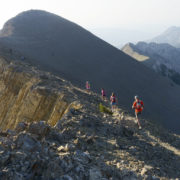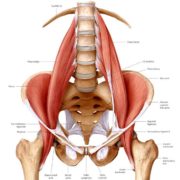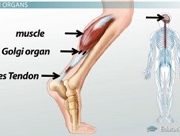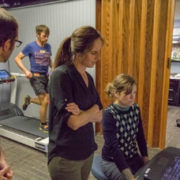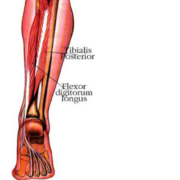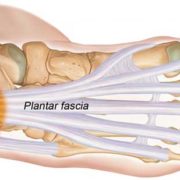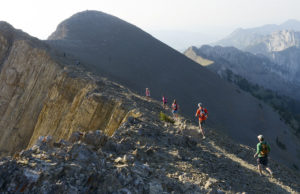 Addressing Age-Related Calf Weakness
Addressing Age-Related Calf Weakness
An average weekend in Missoula, Montana confirms the fact that 30 million people ran at least 50 days annually in the United States in 2012-2013. Running efficiently and injury-free, however, is more elusive. Nearly 79% of all runners experience a running injury annually. As runners age, the primary site of overuse injuries changes from the knee to the Achilles, ankle, and calf. Both observation (on the roads, trails, and in our running lab) and research correlates the increase lower leg injuries with altered running biomechanics and reduced calf muscle power measure as ground reaction (vertical) force.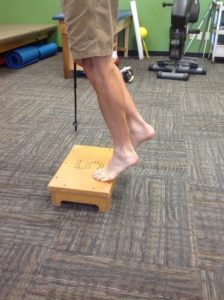
Despite our best efforts to train consistently, understanding what happens to our running stride as we grow older allow us to focus our efforts on targeted lower leg strengthening to reduce injury risk and maximize running performance. A September 9, 2015 article in the New York Times brought to the forefront the work of Paul DeVita, a professor of kinesiology at East Carolina University in Greenville, N.C., and president of the American Society of Biomechanics. Dr. DeVita’s 2016 research looked at running gait changes in a sample of 110 runners. The runners were a mix of male (54%) and female (48%) who had been injury free for at least 6 months. The age range was 23-59 years old. DeVita and his colleagues found that the older runners ran with a shorter stride length, a higher turnover (cadence) rate. The net result is a slower running pace which research has shown is due to altered running mechanics, decreased calf-lower leg muscle strength, and increased stiffness in the ankle with age. Between the ages of 20 and 60, runners typically experience a 31% reduction in ankle power, total power (ground reaction force to lift you off the ground and in a forward direction), along with a 13% decrease in stride length and running speed.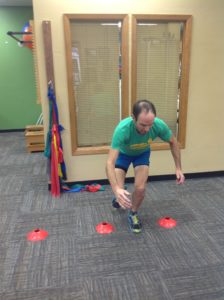
The statistics referenced above should be strong motivators to masters and young runners alike to be proactive with targeted strength training, especially in the off-season. With much of the mainstream running injury reduction focus targeted on foot strike pattern and core strength, the importance of the calf musculature (gastrocnemius, soleus) is often overlooked. Ankle stiffness predisposes one to developing further calf weakness. The calf muscle aids in initiating the push-off phase of the running stride, and plays a key role in absorbing impact as your foot hits the ground. The importance of the calf muscle in absorbing impact loads is phenomenal: 160-180 foot strikes per minute with 2.5 times your body weight plus the force of gravity exerted through each foot strike over “x” number of minutes running equals a HUGE demand placed through the foot and lower lower leg. Eccentric (resisting gravity) calf strengthening will increase the resilience and shock absorption properties of your calf musculature, while concentric (against gravity) and plyometric strengthening will increase the power generation of your calf muscle.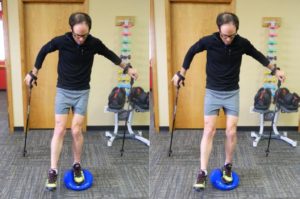
To summarize, DeVita’s research confirmed running stride length, speed, and lower leg muscle function decline in a linear manner with age. Calf (gastroc-soleus muscle) and ankle strength declines with age as well. A reduction in lower leg muscle strength (both concentric and eccentric) and ankle motion (dorsiflexion) shifts the burden of self-propulsion to our knees, hips and gluts which are already physically challenged by prolonged sitting and tight hip flexor muscles. Lower leg, foot, and Achilles tendon injuries become increasingly common in runners over forty. Gradual degradation of muscle and tendon tissue integrity and nerve innervation sets the stage for an increase in running-related overuse injuries. Stretching the calf and lower leg muscles, Active Release techniques, dynamic warm-up, and rolling are great ways to improve lower leg muscle tissue mobility. Lower leg, ankle, and foot strengthening exercises must be a part of every runner’s training program, not just those in the fourth decade of life and beyond. Strengthening exercises should include single leg heel raises, heel drops, resisted ankle inversion, eversion, dorsiflexion, and intrinsic foot strengthening exercises (see photos).
If you have been battling a lower leg issues or would like to participate in a 2D video running analysis, call or email the running injury and biomechanics experts at Sapphire PT. Our physical therapists will not only return to pain-free running, but also reduce future injury occurrence while improving your running efficiency and performance. Targeted strengthening and muscle-tendon tissue mobility are the keys to improving running performance at any age.
John Fiore, PT
Sapphire Physical Therapy
john@sapphirept.com
www.sapphirept.com
References:
- Reynolds G, Why Runners Get Slower with Age. New York Times. 2015, Sept 9.
Running U. Running USA 2014 state of the sport – part ii: running industry report http://wwwrunningusaorg/2014-running-industry-report?returnTo=annual-reports. 2014.
2. Goss DL, Gross MT. A review of mechanics and injury trends among various running styles. US Army Med Dep J. 2012; 62–71.
3. McKean KA, Manson NA, Stanish WD. Musculoskeletal injury in the masters runners. Clin J Sport Med. 2006; 16 (2): 149–54.
4. DeVita P, Fellin RE, Seay JF. The relationship between age and running biomechanics. Med & Sci Sports & Exerc. 2016; 48 (1): 98-196.
5. Fukuchi RK, Stefanyshyn DJ, Stirling L, Duarte M, Ferber R. Flexibility, muscle strength and running biomechanical adaptations in older runners. Clin Biomech (Bristol, Avon). 2014; 29 (3): 304–10.

